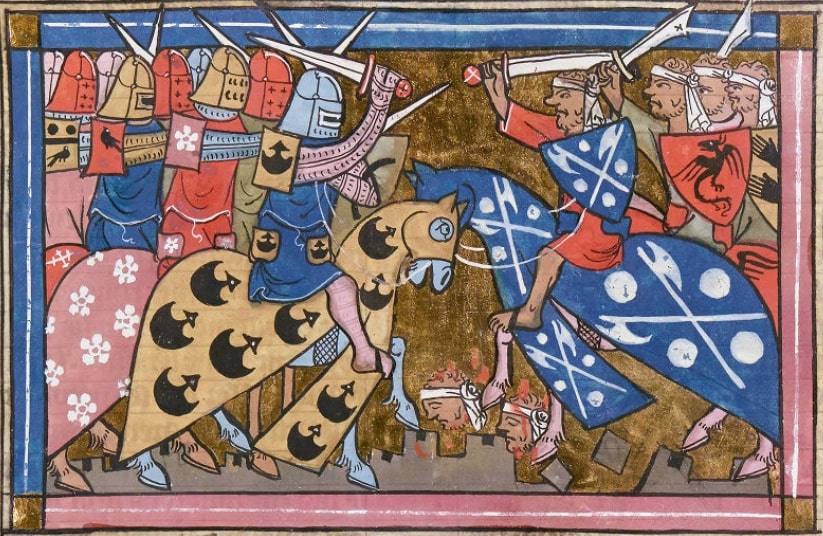|
Hugh II Of Le Puiset
Hugh II ( 1106 – 1134), also called Hugh du Puiset, was a Crusader and the Count of Jaffa. He revolted against King Fulk of Jerusalem in 1134. Arrival in the kingdom Hugh was the son of Hugh I of Jaffa and his wife Mamilia (or Mabilla). According to William of Tyre, his father had come to Jerusalem on a pilgrimage during the reign of Baldwin II, and Hugh was born in Apulia during the journey. However, according to John L. La Monte, it is more likely that Hugh I came to the east with Bohemund of Taranto in 1106. In any case, Hugh I was named Count of Jaffa after his arrival (by Baldwin I, if in 1106), but soon died. When Hugh II came of age he arrived in Jerusalem to claim his inheritance, and married Emelota (or Emma), niece of the Patriarch Arnulf of Chocques. Hugh was a relative of Queen Melisende, King Fulk's wife, as their fathers Hugh I and Baldwin II were cousins; Melisende's grandmother, also named Melisende, was a sister of Hugh's grandmother Alice. Hugh had a close re ... [...More Info...] [...Related Items...] OR: [Wikipedia] [Google] [Baidu] |
Crusade
The Crusades were a series of religious wars initiated, supported, and sometimes directed by the Latin Church in the medieval period. The best known of these Crusades are those to the Holy Land in the period between 1095 and 1291 that were intended to recover Jerusalem and its surrounding area from Islamic rule. Beginning with the First Crusade, which resulted in the recovery of Jerusalem in 1099, dozens of Crusades were fought, providing a focal point of European history for centuries. In 1095, Pope Urban II proclaimed the First Crusade at the Council of Clermont. He encouraged military support for Byzantine emperor AlexiosI against the Seljuk Turks and called for an armed pilgrimage to Jerusalem. Across all social strata in western Europe, there was an enthusiastic response. The first Crusaders had a variety of motivations, including religious salvation, satisfying feudal obligations, opportunities for renown, and economic or political advantage. Later crusades were ... [...More Info...] [...Related Items...] OR: [Wikipedia] [Google] [Baidu] |

